The Dinosaur Era
Giants ruled the earth millions of years ago
Dinosaurs ranged from the size of a chicken to the size of a 10-story building, and their fossils continue to provide insight into the evolution and behavior of these incredible creatures. They went extinct 66 million years ago, but one lineage survived and is still among us: the birds. We have collected some of the best-preserved and most unique dinosaur skeletons in the world. In addition to these remarkable skeletons, our collection features an array of coprolites, plant fossils, dinosaur eggs, amber, and mammal jaws, enriching the dinosaur fossil experience. You will experience the dinosaurs in a new setting using light, sound, and scent. Many more dinosaur skeletons and associated fossils will move into the museum over the coming years, expanding our ability to transport you back to the age of dinosaurs and deepening your understanding of their fascinating world.
"Elin"
Camarasaurus Grandis
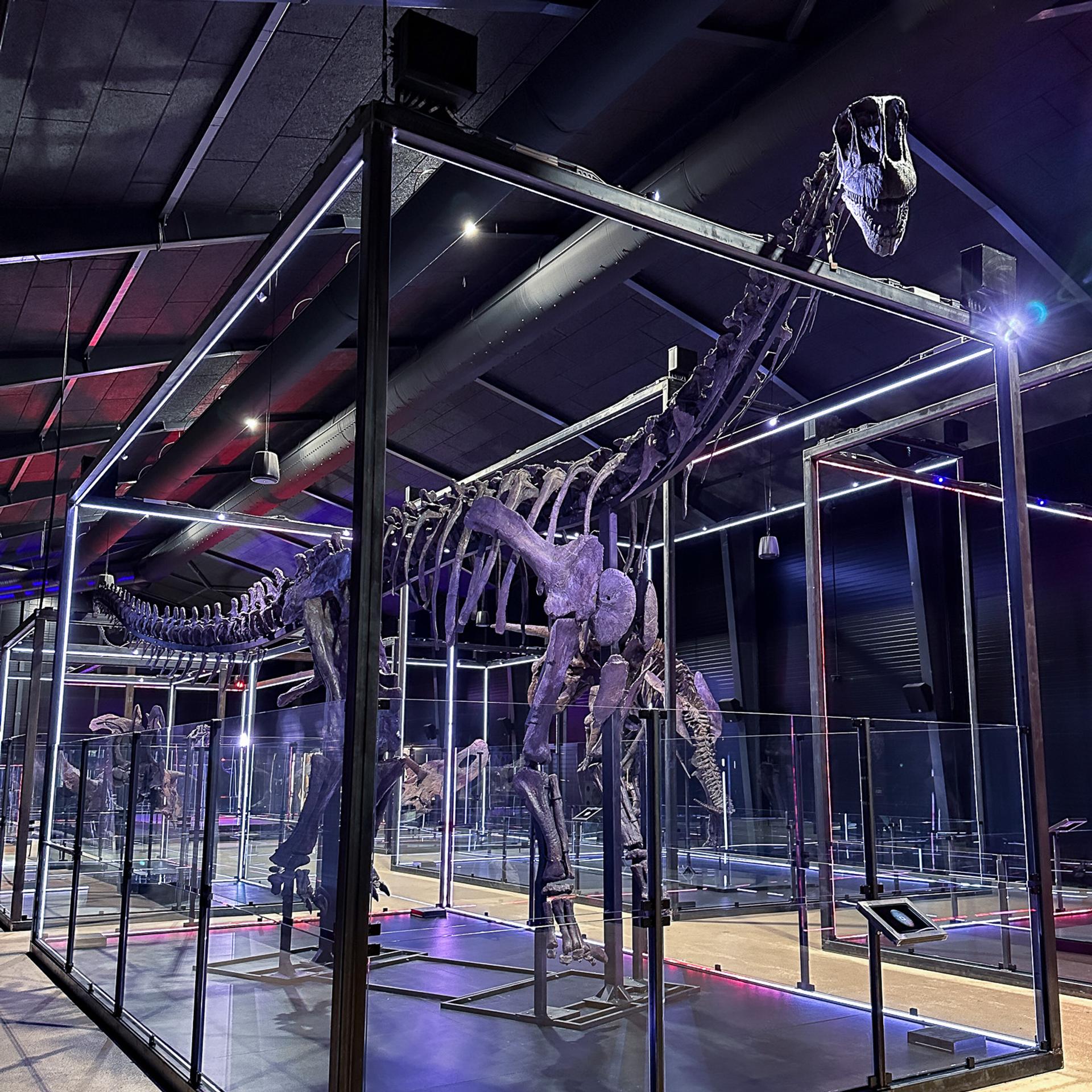
This Camarasaurus Grandis is one of the top three most complete dinosaur skeletons ever discovered, consisting of 97% genuine bones. Measuring 13 meters long, this remarkable dinosaur lived between 155 and 145 million years ago during the Jurassic period. Unearthed in 2017 in Wyoming, the fossil was found in a near-perfect state of preservation, curled up as it was upon death. Rarely seen in Europe, this extraordinary skeleton underwent over 12,000 hours of meticulous restoration and now stands as a testament to our commitment to preserving and showcasing the wonders of natural history.
"Frederik"
Lokiceratops rangiformis
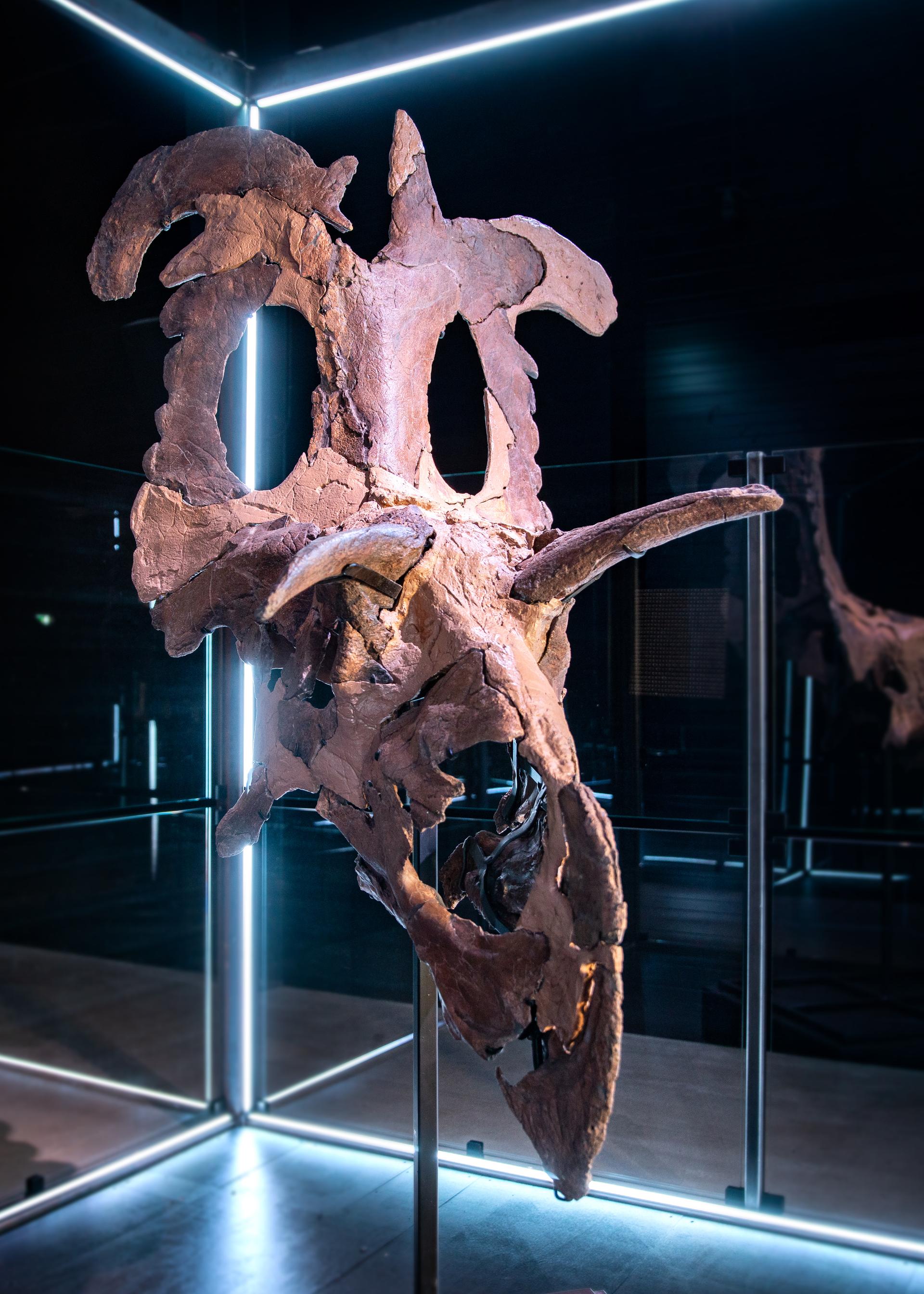
Dating back 78 million years, this is the only known specimen in the world. This incredible horned dinosaur stands out for its massive, blade-like frill horns, which are the largest frill horns ever found on a ceratopsian, and the absence of a nose horn. Lokiceratops was a giant! Measuring approximately 22 feet (6.7 meters) long and weighing around 11,000 pounds (5 metric tonnes), this plant-eating behemoth roamed the ancient swamps and floodplains of what is now Montana.
"Amalie"
Triceratops
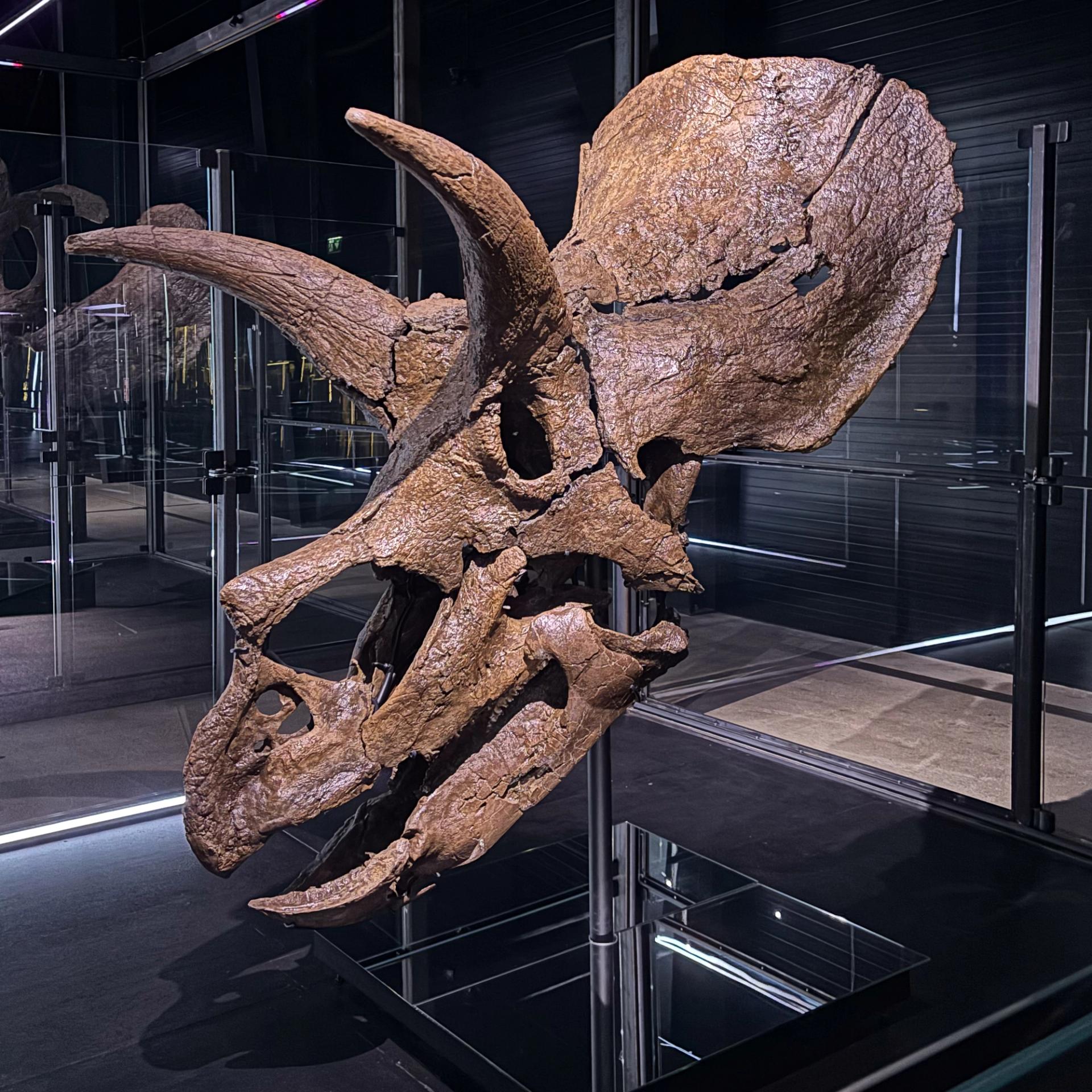
Triceratops is among Europe's most renowned dinosaur species, recognized for its distinctive neck shield and three horns. Amalie stands as one of Europe's best-preserved skulls, dating back 68 million years. Measuring 1.5 x 2 meters, the skull represented about one-third of its body. Triceratops could grow up to 8-9 meters long and weigh up to 6 tons as herbivores during the Cretaceous period.
“Big Joe”
Allosaurus, the fearsome carnivore
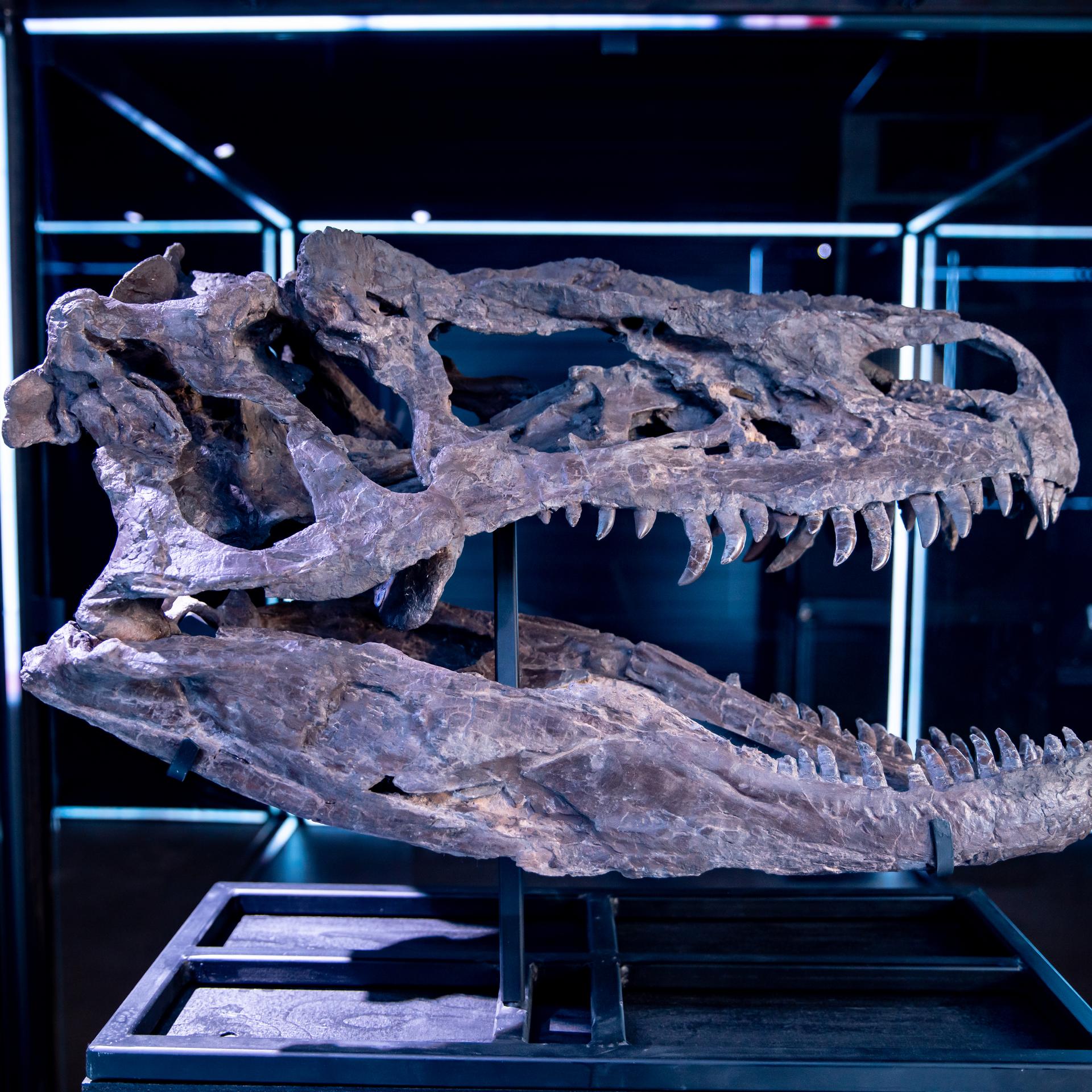
Standing up to 3.5 meters tall and measuring up to 10 meters in length, Allosaurus was the apex predator 155 million years ago. With razor-sharp teeth and powerful jaws, this giant carnivore could crush bones and rip apart its prey with ease.
Read more"Adam"
Torosaurus, the world's biggest dinosaur skull
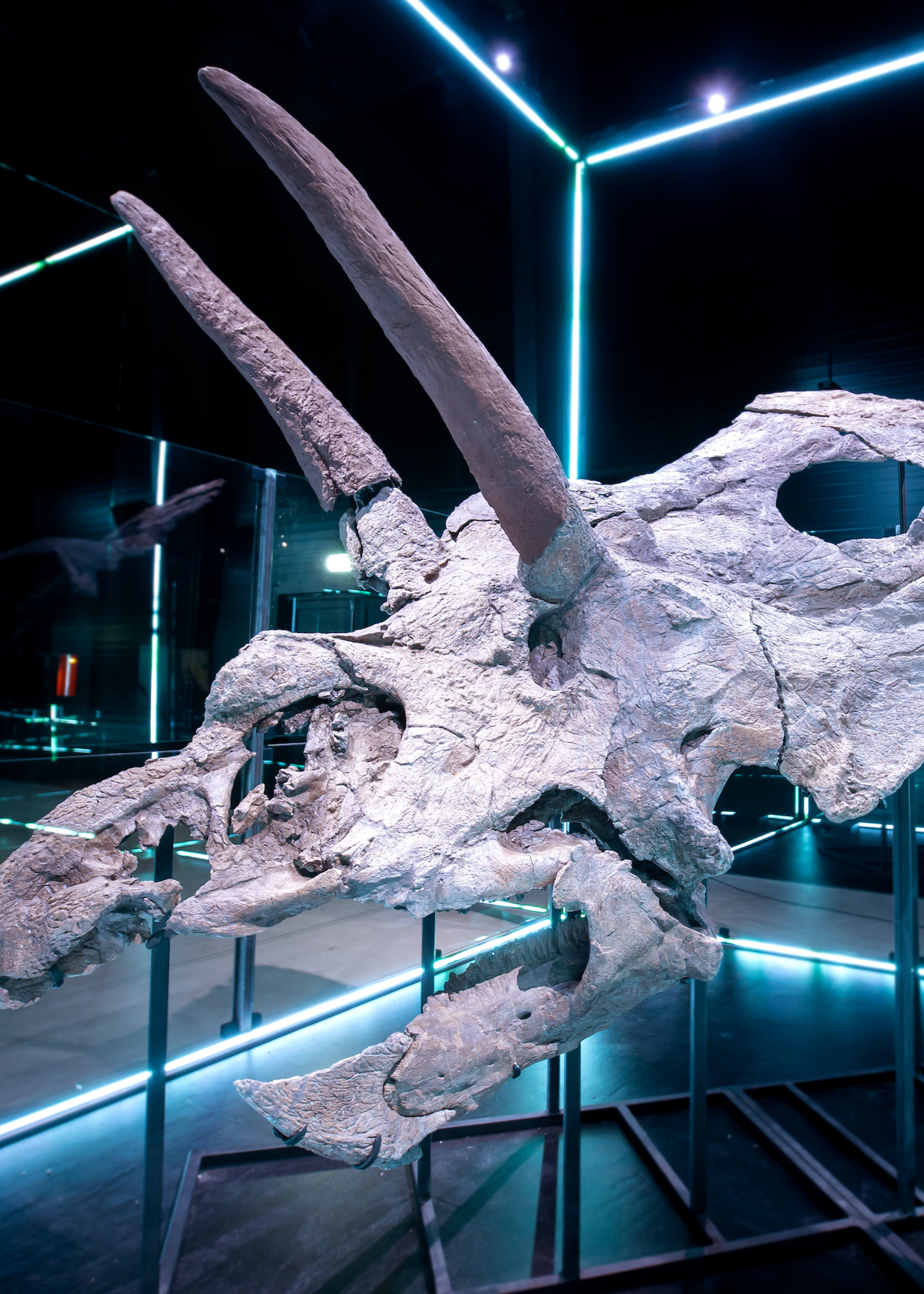
Torosaurus was a herbivorous dinosaur that lived 69 million years ago. The most characteristic feature is the amazing elongated frill on its skull. “Adam”, the specimen in the museum, is in fact the longest dinosaur skull ever found with its vertiginous 3 meters from the tip of the beak to the back of the frill.
Read moreThe Phantom
Archaeopteryx, the world's first bird
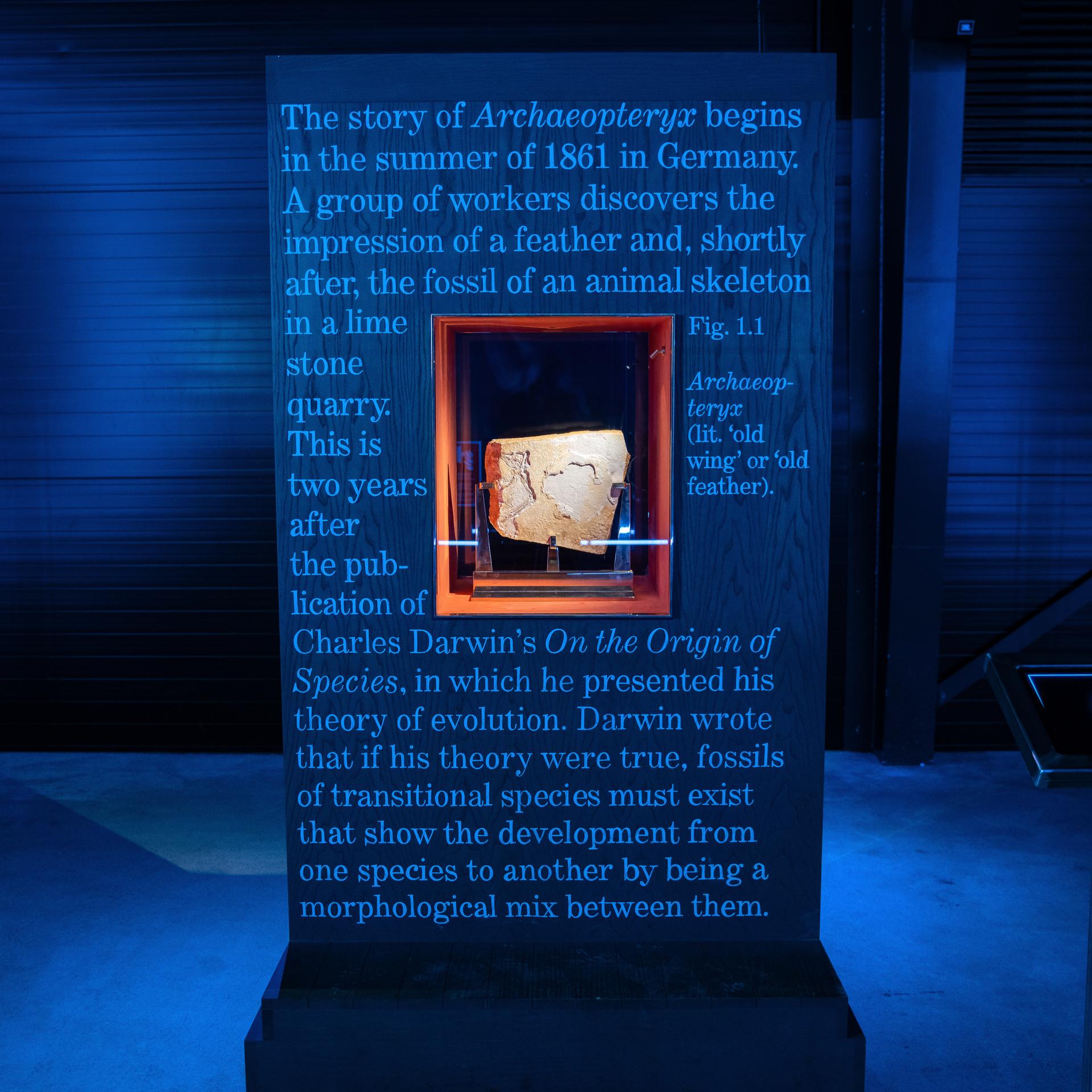
Archaopteryx lived 150 million years ago and is referred to as the "first bird" due to its combination of avian and reptilian features. With the graceful wings of a swan and the agility and ferocity of a raptor, Archaeopteryx is a true marvel of evolution that challenges our understanding of how life on Earth has evolved over time.
Coprolites
Fossilized dinosaur feces
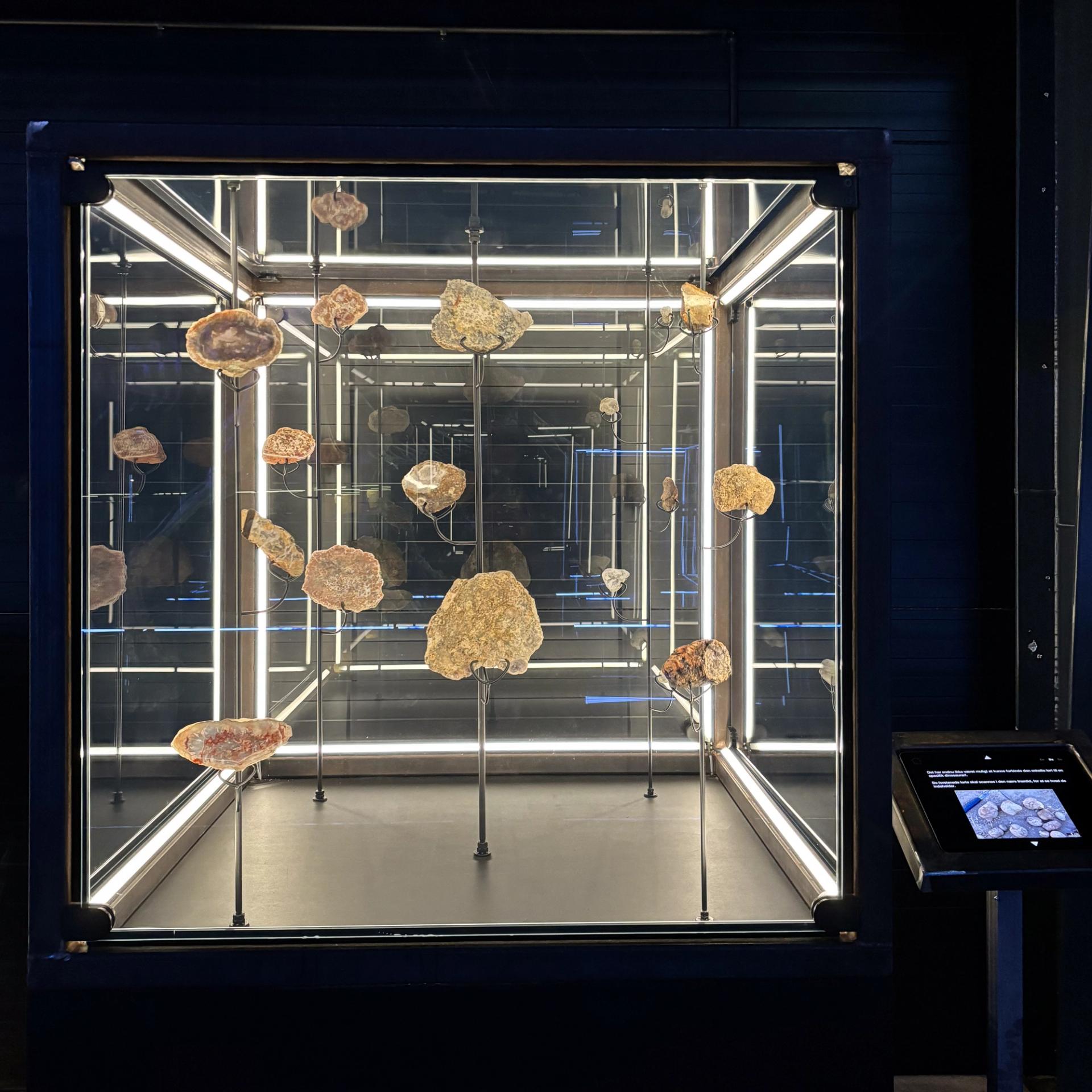
Coprolites, or fossilized dinosaur feces, provide invaluable insights into the diets and digestive systems of ancient creatures. By examining these fossils, scientists can uncover what dinosaurs ate, including plant and bone fragments, offering clues about their health and lifestyles. This research sheds light on the behaviors, environments, and ecosystems of long-extinct species. The museum worked closely with Aarhus University recently to scan our collection of coprolites, with findings that revealed traces of plant material, offering a rare glimpse into the prehistoric world.
Read moreIchnites
Dinosaur footprints from USA and France
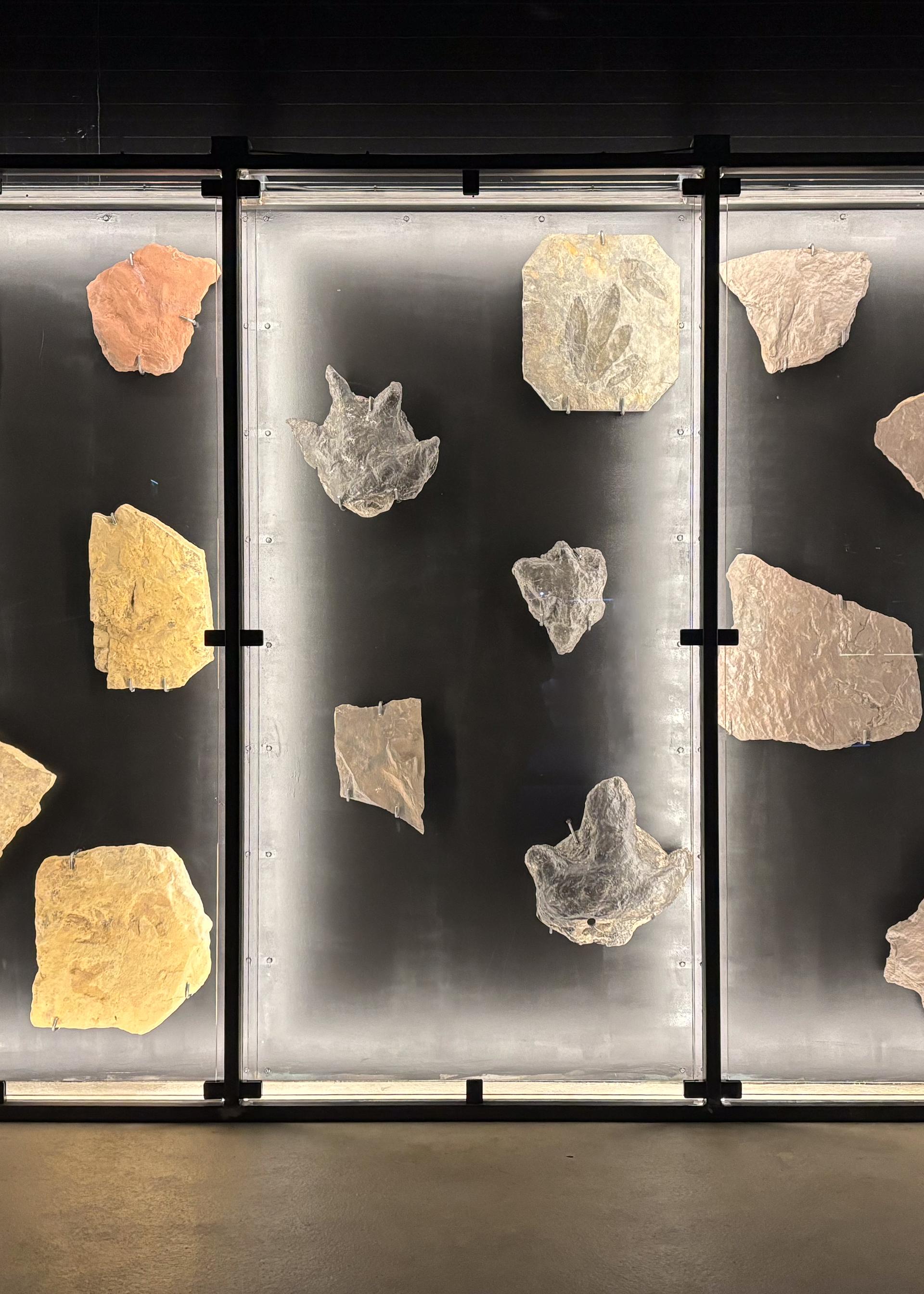
Preserved dinosaur footprints reveal the movements, interactions, and behaviors of dinosaurs in their natural environments. Dinosaur footprints form when an animal steps onto a moist surface, like mud or sand along a shoreline. As the sediment compresses together and hardens into rock, the footprints become fossilized. In the collection, are ichnites discovered in Connecticut, New Mexico, New Jersey, the coal mines at Utah’s Blackhawk Formation and France.
Ichnite Trackway
4,5 meter long dinosaur trackway
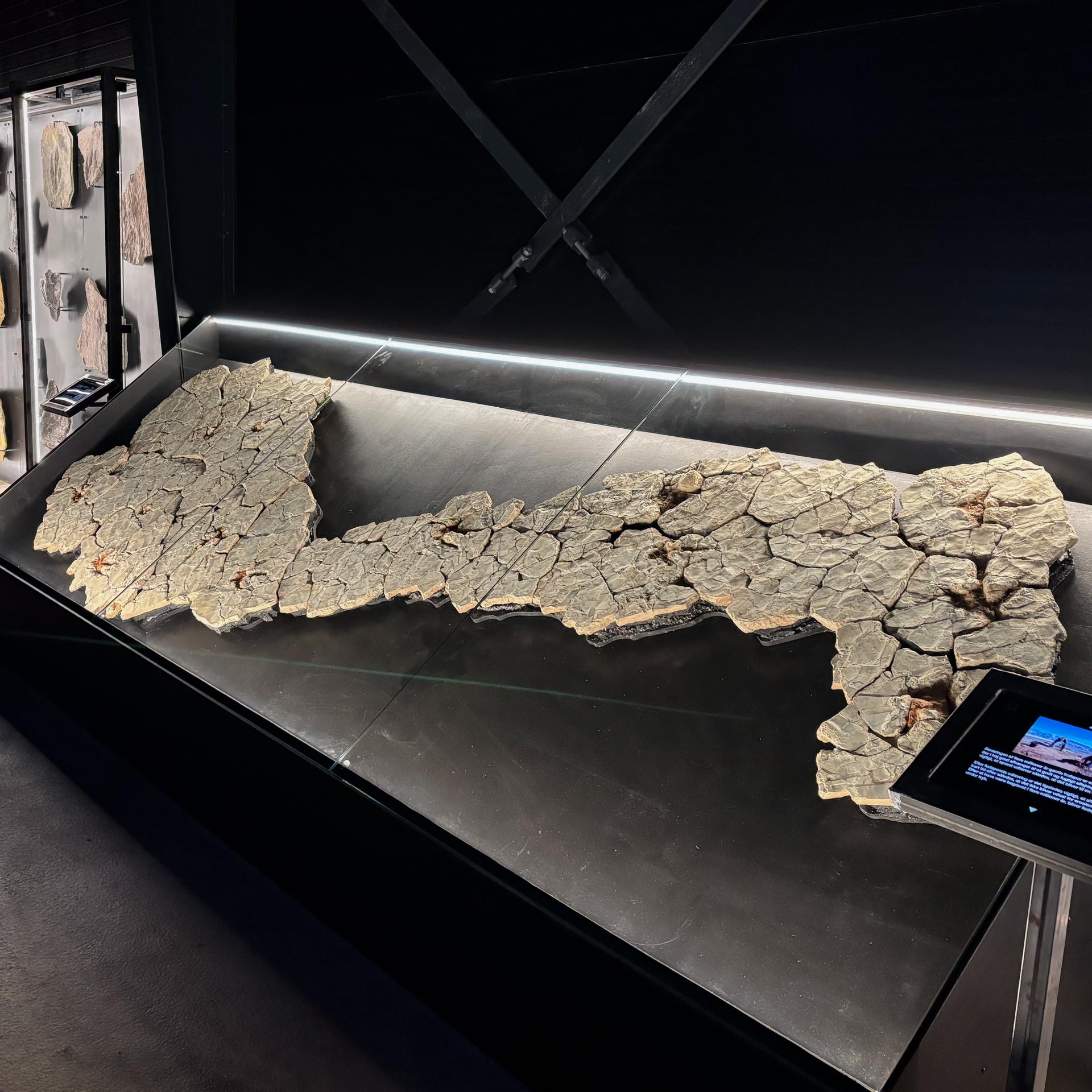
In 2012, a major expedition to Greenland unearthed a 211 million years ago dinosaur footprint trackway confirming that predatory dinosaurs, lived in Greenland during the Triassic era. The footprints were left by nine different theropods, which moved across a damp mud area, likely near a drying lake or river as the result of a warm climate. Calculations tell us that the footprints are from Coelophysis that were moving through the mud area at speeds ranging from 7 to 12 km/h.
Nature’s Time Capsule
Prehistoric Amber
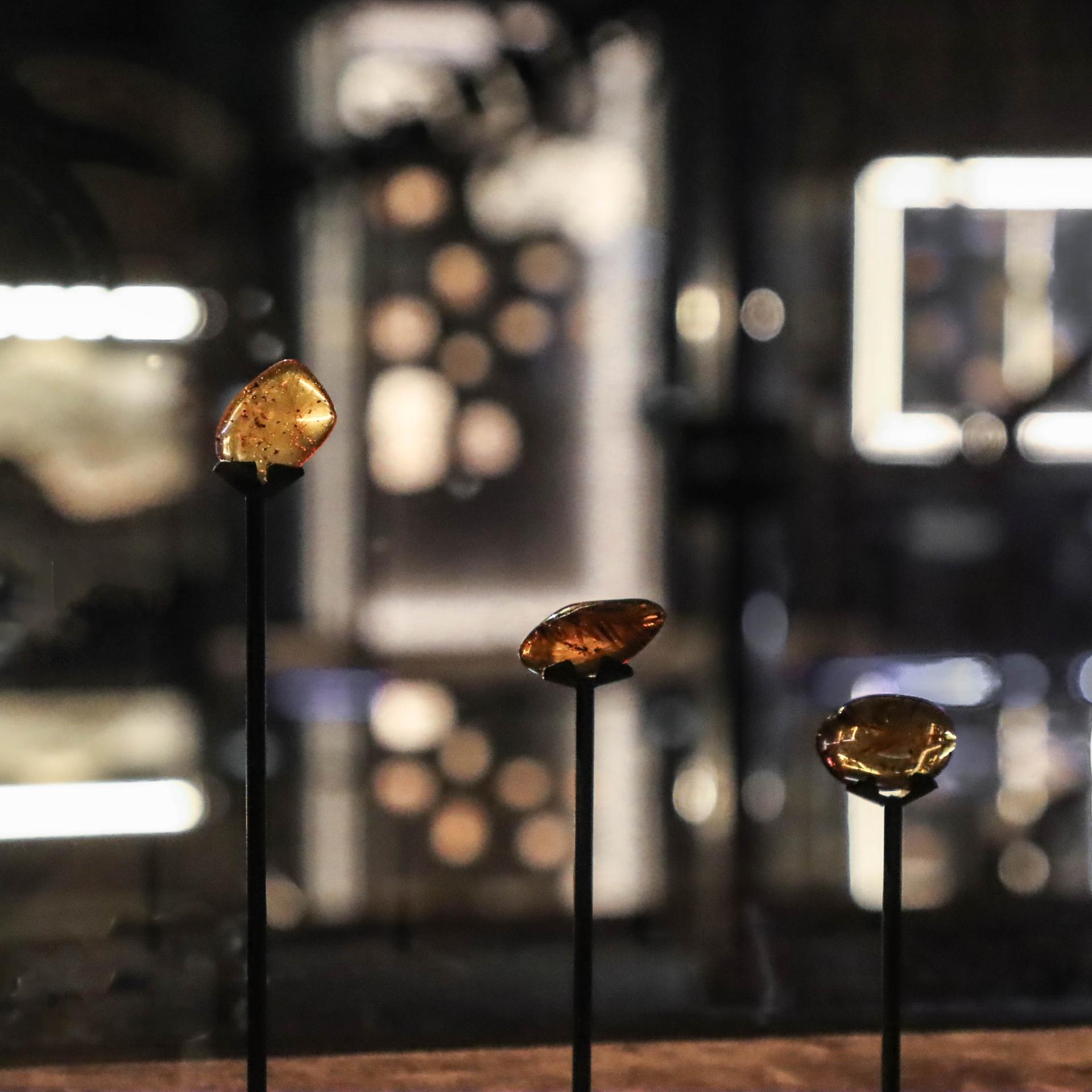
These prehistoric amber specimens are extraordinary time capsules, preserving fragments of a world 98 million years ago. Encased within are genuine relics of the past: insects and feathers from Cretaceous dinosaurs. Originating from the resin of Araucariaceae family conifers, these pieces offer a captivating glimpse into an era when feathered dinosaurs roamed vast tropical rainforests. Occasionally, a dinosaur feather or insect became trapped in the resin, forever encapsulated. While Jurassic Park excites the imagination, the oldest successfully extracted DNA, at around 2 million years old, suggests finding dinosaur DNA in amber is unlikely.
Dinosaur Eggs
Hypselosaurus, a long-necked sauropod

The 13 eggs originate from a Hypselosaurus that lived during the Cretaceous period, approximately 70 mio. years ago. The eggs were found and have been preserved in the exact same position as they were left 70 million years ago in what we today call France.
Read more